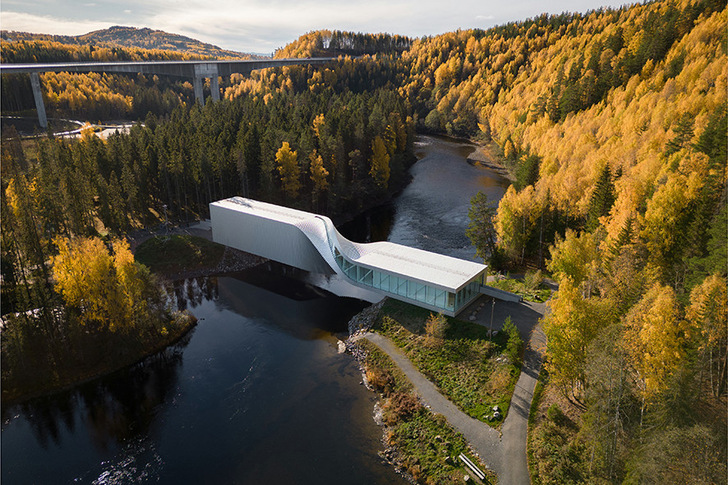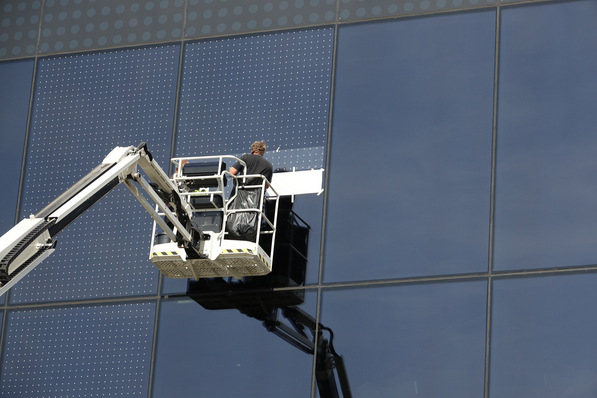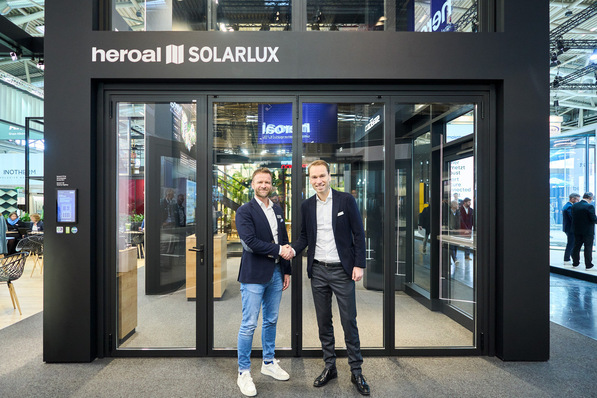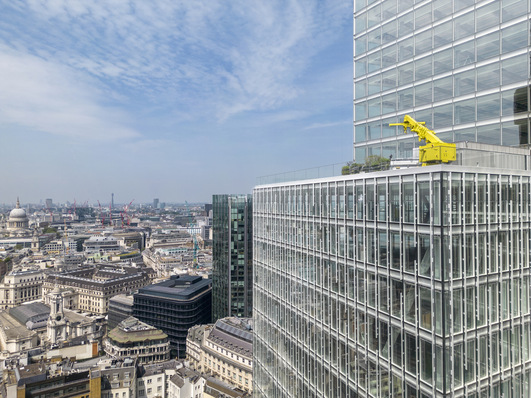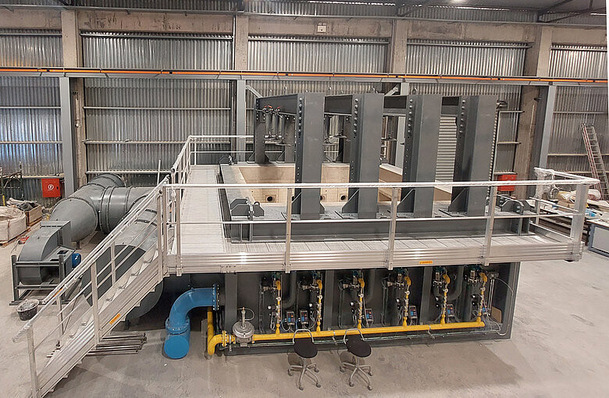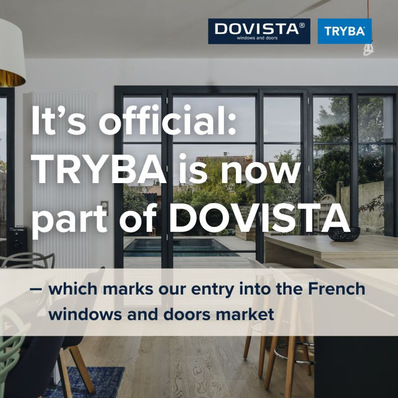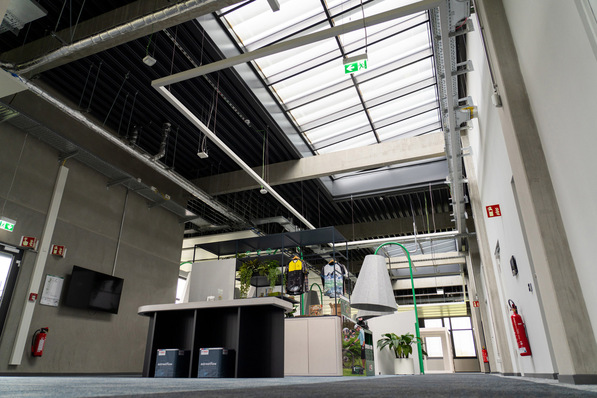Prestigious objects such as museums as well as concert halls and art galleries are very coveted in the architectural scene. Clients rarely impose limits on designs. Via the curved insulating glass of the Berlin-based company Döring Glas, which has been operating under the name of vandaglas since 2021, the flexible Super Spacer is displayed in various museums; among other things, in sensational projects designed by the BIG Bjarke Ingels Group office such as the world's first refugee museum FLUGT in Denmark and the art museum "The Twist" not far from Oslo.
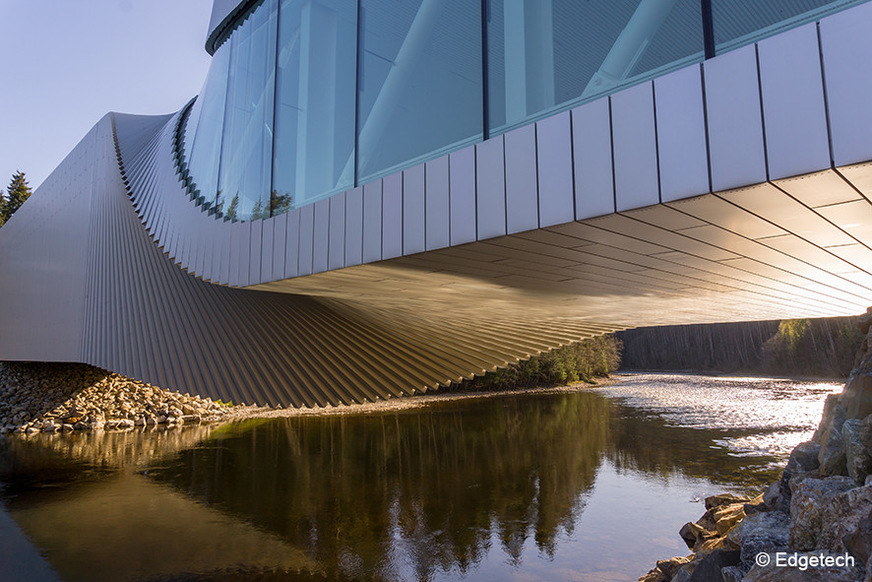
designium/Shutterstock
Three-dimensionally free-formed insulating glass
A short distance from Oslo, masterpieces by Yayoi Kusama, Fernando Botero or Olafur Eliasson await you on the grounds of the Kistefos Art Museum in the middle of the Norwegian forest landscape. “The Twist” closes the circular path through the sculpture park above the Randselva River. The spectacular 90-degree rotation transforms the gallery itself into a sculpture.
vandaglas supplied ten quadruple-glazed insulating glass elements with a glass package that is 55.04 mm thick for the structural glazing facade. The free-form units are manufactured using SGG Climaplus Contour with Super Spacer TriSeal. A PVB film blocks the UV radiation to shield the artwork from sunlight. The IGU elements cover a total area of 98 square metres, the largest element covers an area of 5.2 × 2.5 metres and weighs 1.2 tonnes. See here for more details on "The Twist".
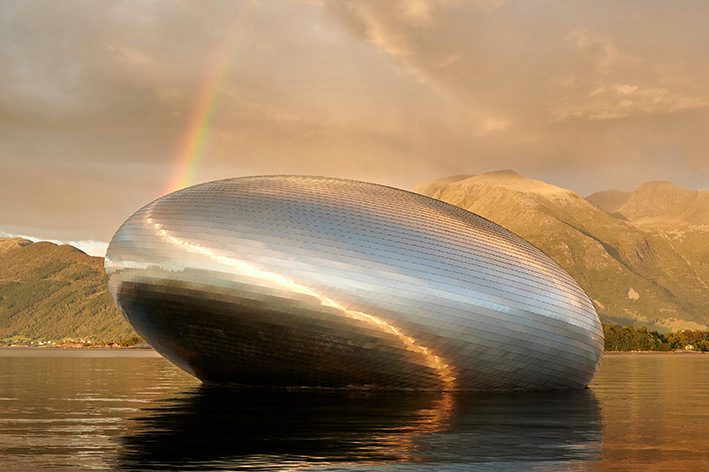
Tobias Lamberg Torjusen
One of the largest floating art installations in the world, the "Salmon Eye", which opened in Hardangerford in September 2022, is also located in Norway. The double-curved, ellipsoidal shape is modelled on a salmon’s eye, the outer skin made of 9,250 stainless steel plates imitates the shimmering silvery fish skin. Despite its weight of 1,256 tonnes, the floating pavilion designed by Kvorning Design has an elegant and light appearance. vandaglas supplied seven curved double-glazed insulating glass elements for the exterior panes. These result in a total arch length of around 16.6 metres. The laminated safety glass CurvePerformProtect with Super Spacer TriSeal Flex, a spacer specially developed for curved glass, was used. As with the Kistefos facade, the panes are shaped three-dimensionally.
Facade technology at the outer edges of what is possible
The Musée Atelier Audemars Piguet in Brassus, a small town more than 1,000 metres above sea level in the Swiss Jura Mountains, aims to tell the story of talented watchmakers who, for generations, have continually pushed the boundaries of their craft. A glass double helix, that nestles in the landscape like a giant watch spring and is connected to the historic building where Audemars Piguet was founded in 1875, forms the heart of the new museum.
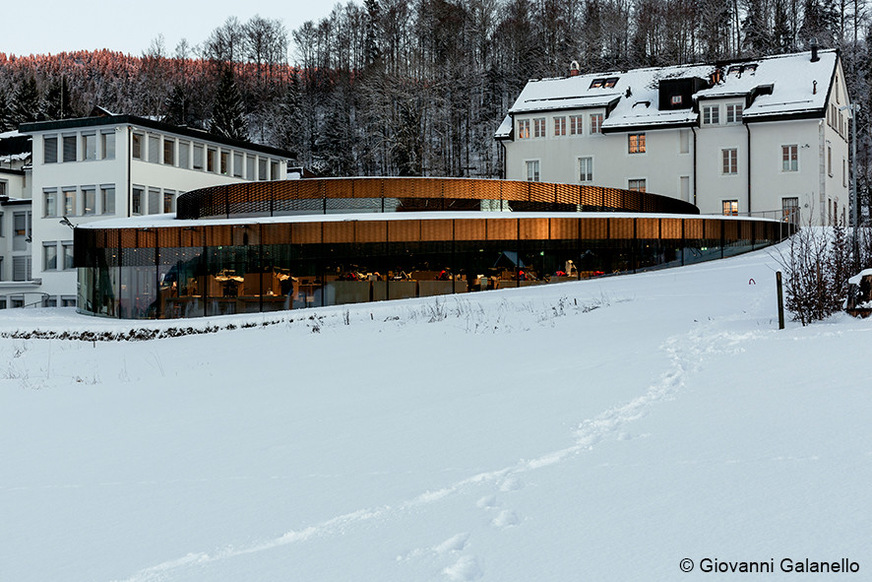
G E Galanello
Viewed from the outside, the curved all-glass facade, the 470-tonne greened steel roof, and the striking sunshade louvre fashioned from untreated brass determine its appearance. The pavilion takes the concept of structural glazing to the technological extreme in an unprecedented manner. In the absence of additional supports or stiffeners, the 101 curved, trapezoidal elements of the glass facade bear the loads. To achieve this, the insulating glass units are bonded at the top and bottom in specially manufactured steel shoes using a high-modulus silicone sealant. Injection mortar prevents the glass edge and steel from touching.
See also: Wicona now offers 100% recycled aluminium profiles
The realisation of this vision was preceded by an intensive, technologically challenging collaboration between the BIG design team, the structural engineers from Lüchinger+Meyer Bauingenieure, the facade specialists FRENER + REIFER and the glass manufacturer SFL Glastechnik as the main protagonists, as well as countless load tests – involving loads of up to a maximum of 80 tonnes - and ageing tests.
Designed to withstand harsh conditions
In view of the harsh microclimate in the Vallée de Joux, snow loads of more than 5 kN/m2 and minimum temperatures of well below minus 20 °C had to be taken into account in the construction. In addition, the facade had to meet the Swiss Minergie standard for energy efficiency. The triple glazed insulating glass was produced to achieve a Ug value of 0.5 W/(m²K).
The sizes of the insulating glass units range from 2.4 m x 1.5 m to 2.4 m x 5.5 m. Although only four different bending radii were required, each unit is unique due to the fact that the top and bottom edges followed the natural course of the terrain.
The thickness of the laminated glass structure of the interior walls increases from the outside to the centre of the spiral up to 66 mm, consisting of up to 5 x 12 mm layers plus SGP film. The glass packages of the exterior facade are each 96.5 mm thick. The inner, load-bearing pane consists of triple laminated 12 mm solar control glass SunGuard SNX 60/28 float glass with a SGP film, the middle 8 mm pane is unlaminated and the outer pane is 2x 8 mm laminated glass. SFL Glastechnik chose the Super Spacer TriSeal FlexTM in black as the spacer.







